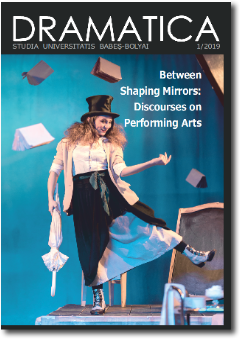RESEARCH IN FILM AND VIDEO: ARTISTS USING THEIR BODIES IN CINEMATIC EXPERIMENTS
RESEARCH IN FILM AND VIDEO: ARTISTS USING THEIR BODIES IN CINEMATIC EXPERIMENTS
Author(s): Ligia SmarandacheSubject(s): Theatre, Dance, Performing Arts, Fine Arts / Performing Arts, Visual Arts, Film / Cinema / Cinematography
Published by: Studia Universitatis Babes-Bolyai
Keywords: Artists’ bodies; camera; reflected bodies; video art;
Summary/Abstract: The aim of this article is to study the relationship between author and camera, the different aspects of this subtle relationship with technology. From the whole cinema history, many artists and film directors played different roles in front of the camera. Whether they interpret a scenario character, in case of fiction films, or use their body in search of cinematic effects, for video art, they choose to be in both parts of the camcorder at the same time. Why does this “video eye” sometimes turns towards the artist? Is it only meant to explore the outside world of the artist? Or is it a mirror which is sometimes inviting you to take a glance at yourself? The term used was first introduced by Gene Youngblood “The video eye” as it is a subtle metaphor for the main function of the camera. Why do so many artists use the camera with the purpose of showing themselves or their bodies into video experiments? Is it an expression of narcissism or is it a self-exploring tool? To find the answers for all these questions, the research looks into the playful role that the “video eye” has in experimental films and videos. This role was revealed by examining different kinds of esthetic results in comparison with the artist’s intention. For example, the body mirrored or reflected, seen in its choreography or as a performer in non-narrative films, are aspects which could draw a conclusion about the self-representation aesthetics.
Journal: Studia Universitatis Babes-Bolyai - Dramatica
- Issue Year: 64/2019
- Issue No: 1
- Page Range: 179-189
- Page Count: 11
- Language: English

